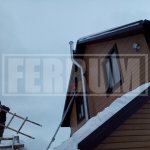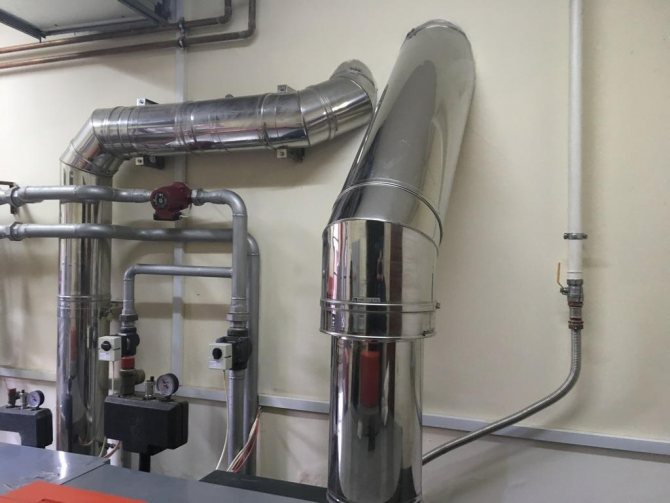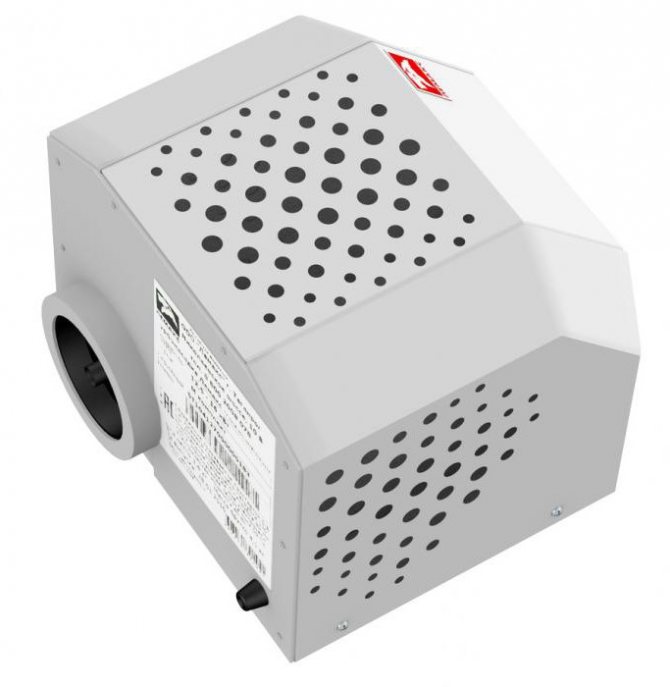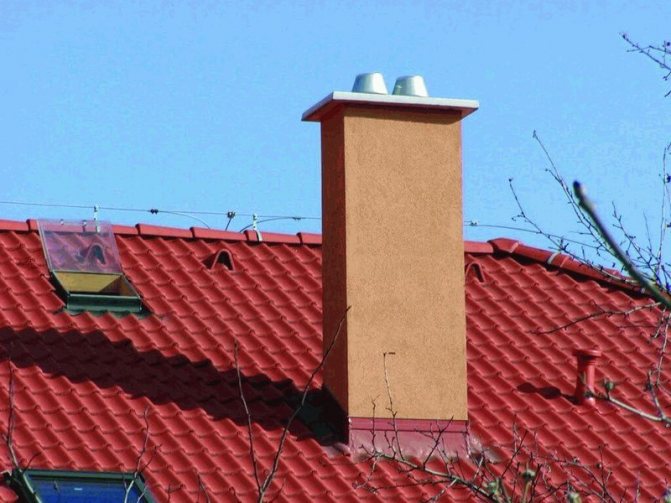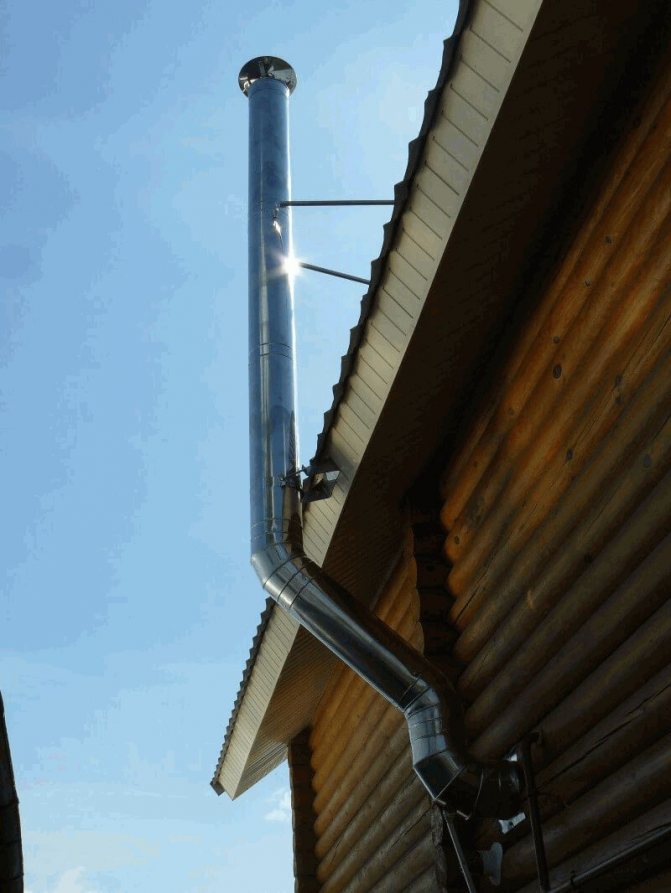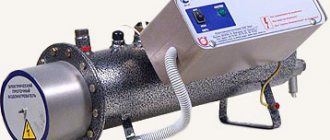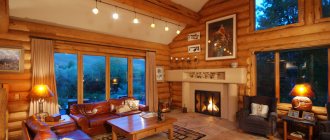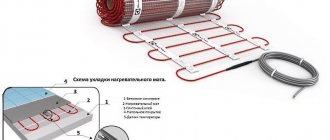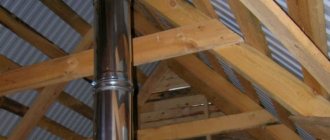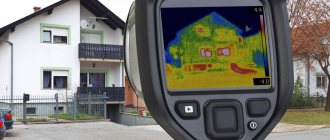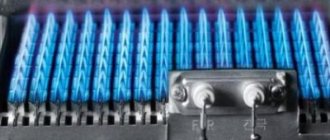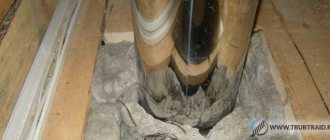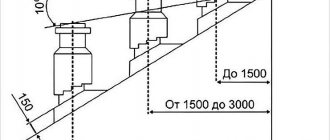- Pipe cleaning
Many wondered why condensate forms in the chimney of a gas boiler and how to reduce its volume or completely eliminate it. It is necessary to comprehensively consider the problem: to determine what its scale depends on, how to prevent it. You will not only make sure that preventive measures are useful, but you will also be able to adopt them in a timely manner (after all, some of them need to be introduced at the stage of building design).
What it is
When burning any fuel - gas, coal, peat, coke and others, in addition to heat, steam is also released. As it rises, it cools on contact with air of a lower temperature, and part of it turns into condensate in the smoke channel, that is, into moisture that flows down the walls. This is a natural, but negative and even dangerous physical phenomenon that can turn into the most harmful consequences for the entire heating system (below, in a separate section, we will tell you which ones).
Causes and factors affecting the formation of condensation
Immediately, we note that they are listed in no particular order, and not according to their degree of importance. So this:
- The temperature of the steam (waste gas leaving the furnace head) does not exceed 100 ° C. This is a typical disadvantage for a significant part of modern heating units.
- The pipe is too long - the smoke cools quickly and strongly in the upper part.
- The selected fuel is either damp (saturated with moisture during storage), or simply poorly suitable (initially contains a large percentage of water).
- The hog's clearance has narrowed due to a decrease in thrust caused by the accumulation of soot deposits.
- The piping is not sufficiently insulated and / or made of the wrong material (for example, zinc in one layer).
- The air outside is much colder than the outgoing steam and, due to the serious temperature difference, condensation in the chimney of a private house collects quickly and in large volumes.
- The exhaust gas is trapped by the rough walls.
- There is no or insufficient supply of fresh air to the stove, as a result of which the draft is too low, the fuel burns slowly and is not completely burned.
- The outlet channel already contains some amount of liquid that got there due to precipitation or for some other reason.
- The pipe has defects and / or design flaws - it has too inclined or even horizontal sections, its cross-sectional area differs from the design one (up or down), and the like.
- Poor draft - the faster the gas leaves the system, the better, the less time is left for cooling and moisture formation.
- The stove is folded incorrectly - a significant part of the released energy is spent on heating it (and not on heating the room). This leads to a low outgoing steam temperature, and what this threatens, we have already sorted out above.
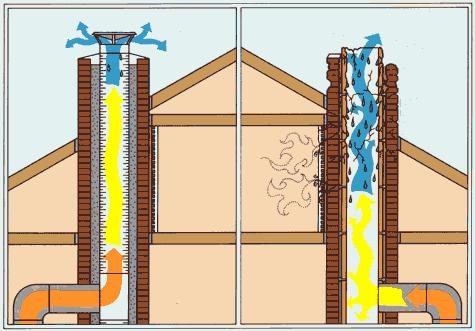
All these factors provoke the appearance of fluid, but they act to varying degrees: some are stronger, others are weaker.
Influence of material on the formation of condensation
A gas boiler differs from an electric or solid fuel gas boiler in that it operates in such a way that a certain amount of moisture is always formed in the system.Therefore, when buying and installing it, it is especially important to think over the issue of insulation and decide what the chimney will be made of. The term and safety of operation of heating equipment depends on the correct choice.
Brick
Well assembled (without cracks and cracks), it will be able to effectively retain heat, which will allow its walls not to cool down for a long time, which means it will help maintain normal traction. On the other hand, it needs to be heated for a long time, and while the temperature remains low, the liquid accumulates relatively actively.
Note also that the brick is easily destroyed by contact with acid solutions and temperature extremes. So it is classic and expensive (if made with good bricks), but not the best choice.
Stainless steel pipes
The material itself, the surface of which is perfectly smooth, is resistant to corrosion and aggressive media. Now about the constructive solution.
In order not to see how the condensate flows from the chimney, it is necessary to use double-walled, not single-walled. The sandwich manufacturing technology implies double rings of different diameters, between which there is a layer of insulation made of non-flammable basalt fiber. With such an additional insulation, the stainless steel will not only warm up quickly, but also cool down for a long time. And this is without the accumulation of moisture and soot inside.
Ceramic pipes
They are quite durable and have the following advantages:
- warm up quickly and cool down slowly, which means they effectively retain heat;
- universal, do not depend on the type of fuel of the stoves;
- easy to maintain and therefore have been in operation for decades;
- fireproof - they are not afraid of soot fires.
There are also disadvantages, they lie in the large weight of the structure, which can lead to difficulties in installation and high cost.
Furanflex chimneys
You can also consider this composite material so as not to think that condensate from a pipe of a gas boiler or stove can damage the heating system. Moisture will not collect on the channel walls, as they will be made of polymer resin reinforced with fiberglass.
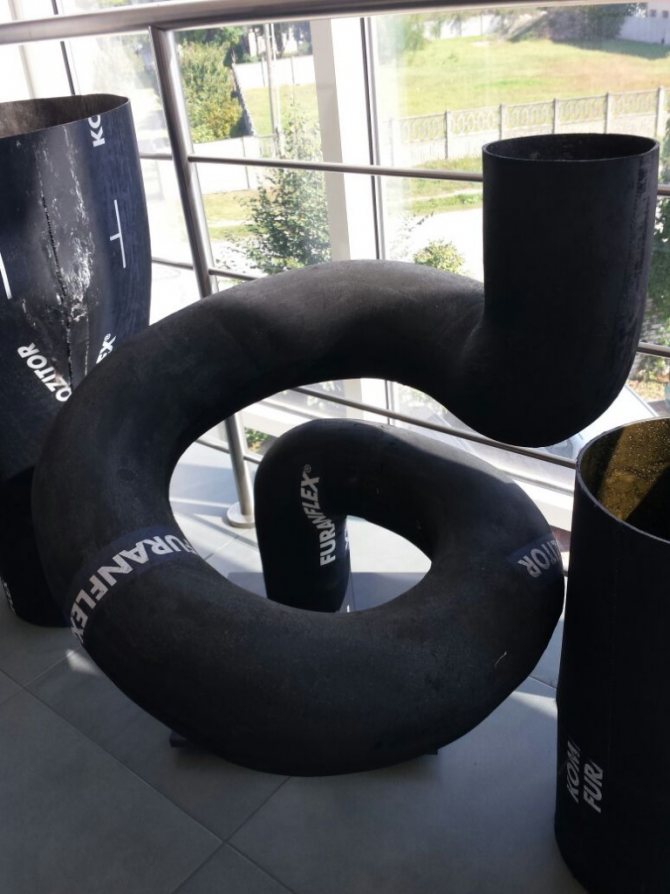

The finished furanflex sleeve can be of any length, diameter and, if properly installed, will be completely sealed. Say a categorical "no" to leaks and a confident "yes" to consistently powerful traction. Installation is quick and clean, without demolition of walls, ceilings, roof parts, supporting structures, and is easy to perform even after finishing work. The material is not damaged even when the steam temperature reaches 250 ° C.
The main disadvantages of furanflex are its high price (2-3 times higher than stainless steel chimneys), expensive installation. In case of damage to the sleeve, it is difficult to access the element, and the purchase of the entire system can significantly hit the pocket.
Asbestos-cement chimneys
Previously, they were used everywhere, today, with the development of technology, they are considered morally obsolete. Choosing this option, you will think not only about why condensation forms in the chimney, but also how to eliminate the consequences of inhaling asbestos dust. And it will be released during the heating process (when the acids contained in the flue gases begin to destroy the channel), settle in the room, and then get into your lungs when you inhale.
This material has other disadvantages: it is not tight enough, does not retain heat well, and absorbs liquids relatively actively. Add to this the roughness of the surface (which, as we found out above, is bad), high porosity and a tendency to cracking under the influence of high temperatures, a threshold of 300 ° C, above which there is a threat of explosion.
Steel and galvanized pipes (single wall)
They are lightweight and inexpensive - the sleeve will come out 50-80% cheaper than the brick sleeve, not to mention the rest. But at the same time, there are drawbacks, and the main one is that the channel burns out quickly.This is due to the inability to withstand the effects of condensation and high temperatures. Steel can rust as it has poor corrosion resistance. And zinc, when heated above 419 ° C, emits toxic substances, therefore, rolled metal products from it can only be used at a low temperature of exhaust gases.
Thus, we recommend opting for insulated stainless steel chimneys.
In addition to choosing a suitable material, it is necessary to install according to the instructions. Failure to assemble the pipe can lead to condensation and soot settling.
Our production
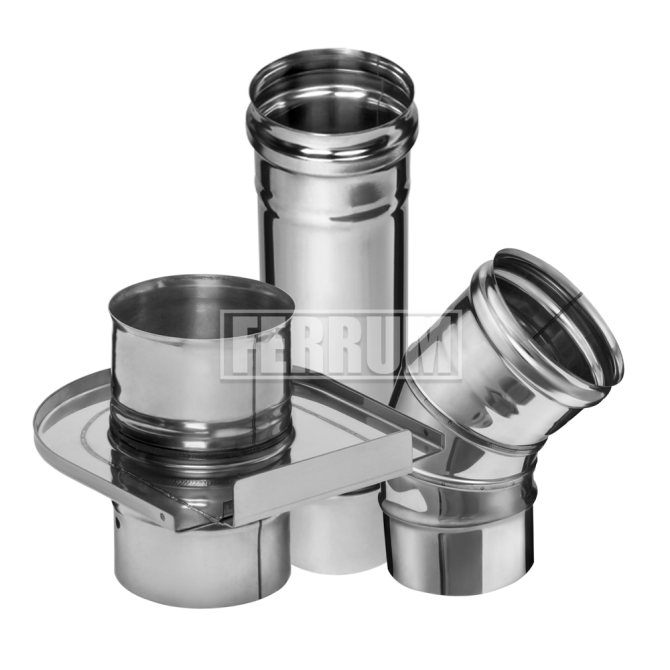

Single wall chimneys
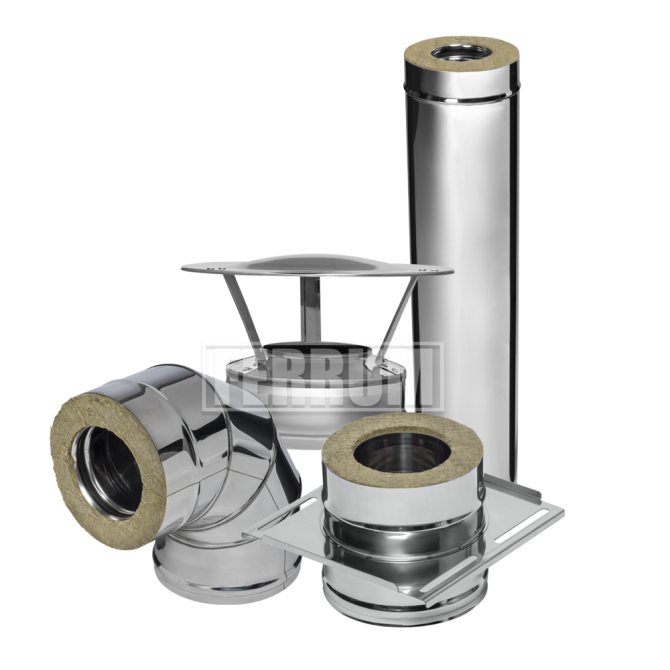

Double-walled chimneys
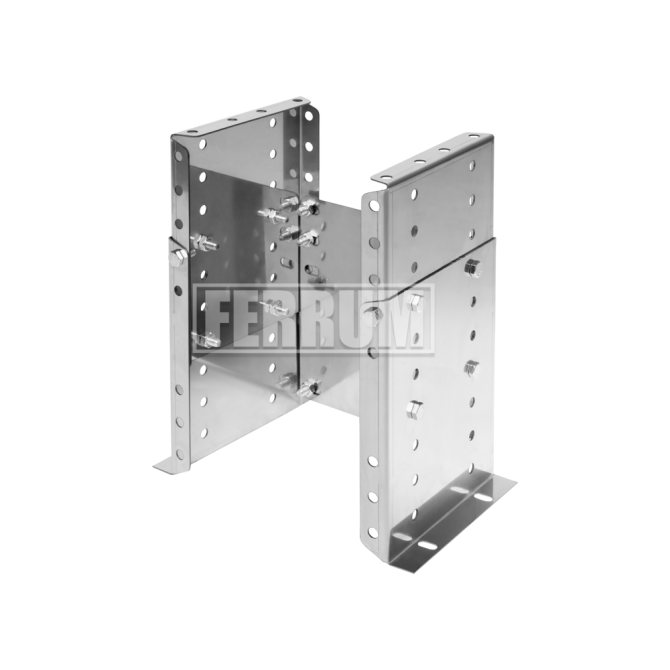

Mounting elements
Differences from a weather vane, umbrella, head and cap
The functionally listed elements and the chimney are completely different devices. They are often confused due to their similar appearance. But there are some differences in their functions:
- Weathervane. It is a special design that can rotate. Due to such movements, the vane accelerates the air around the chimney, preventing it from getting inside and enhancing the extraction of smoke from the chimney.
- Umbrella. Externally, it is a cone-shaped cap. It is used only for the purpose of protection from rain and snow, intended for square and round pipes.
- Head. This is the name of the complex of all elements installed on top of the pipe to protect it. It can be chimneys, hoods, and trim.
- Cap. Brackets are attached to it, to which the protective elements are then fixed. The cap adorns and protects the very neck of the pipe.
The appearance of moisture in double-circuit boilers
In addition to the chimney, condensation can occur in the water pipes of 2-circuit gas boilers. It's all about the temperature difference, due to which the pipe can rust and fail.
The problem can manifest itself for one of the following reasons:
- The ventilation is not working properly (the extraction power is insufficient).
- The indoor climate is unfavorable - the humidity level is consistently exceeded.
- The equipment is operating in the wrong (erroneously calculated) mode.
Unfortunately, the boiler's features do not allow to completely get rid of condensate, but pipe insulation and chimney insulation can reduce the rate of moisture accumulation.
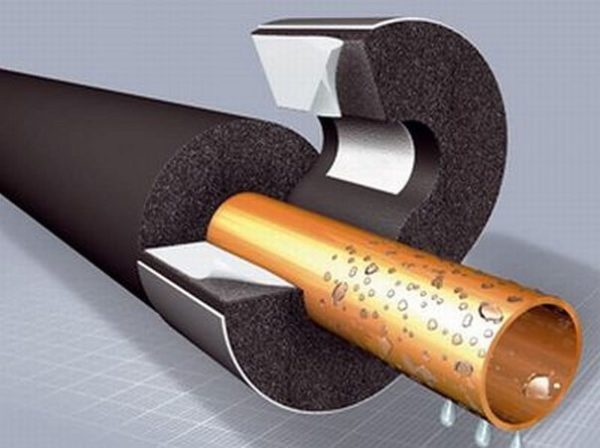

Types of gas boilers and their installation
The main difference between gas boilers is their location in the room. There are 2 types of gas boilers:
- floor gas heating boilers;
- wall-mounted gas heating boilers.
Wall mounted or floor standing gas boiler has its own installation requirements and installation space.
For floor-standing models of boilers, it is necessary to allocate a separate space or even an entire room. This version of a gas boiler is most often equipped with a high-power cast-iron heat exchanger, thanks to which the device is able to heat and provide warm water to a private house with an area of more than 50 sq. m. But the need for a large space for installing a floor-standing boiler becomes a real problem when the area of the house is small.
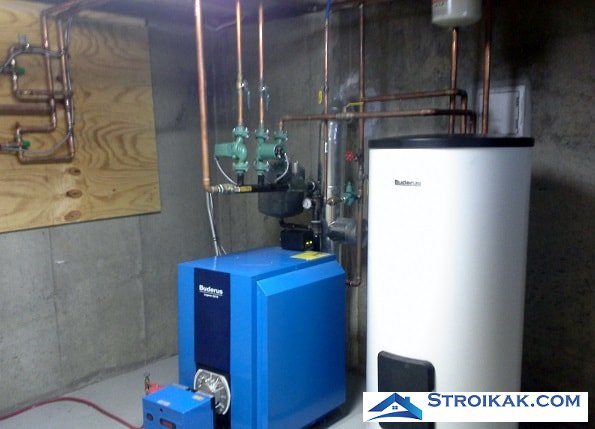

With a shortage of free space in the house, a wall-mounted gas boiler comes to the rescue. There is a huge selection of such models on the modern market, with the help of which you will save free space in the house. The heat exchanger in such boilers is of lower power, therefore, the unit's performance will be lower. Thus, everyone decides for himself how to choose a gas boiler for heating a private house, based on the size of the room, and therefore, when choosing a gas boiler, it is worth making a choice either in favor of free space or in favor of the high power of the device.
Chimney design requirements
They are stipulated by the provisions of SNiP 41-01-2003 and boil down to the following:
- channel height at least 5 m;
- the pipe rises above the flat roof by at least 1 m, above the pitched one - depending on the distance between the ridge and the head (by 0.5 mm, flush or at an angle up to 10 0);
- horizontal sleeve no more than 1 m long;
- the sum of the projections of the inclined and horizontal zones is strictly up to 2 m, and the vertical sections also increase by the same length.
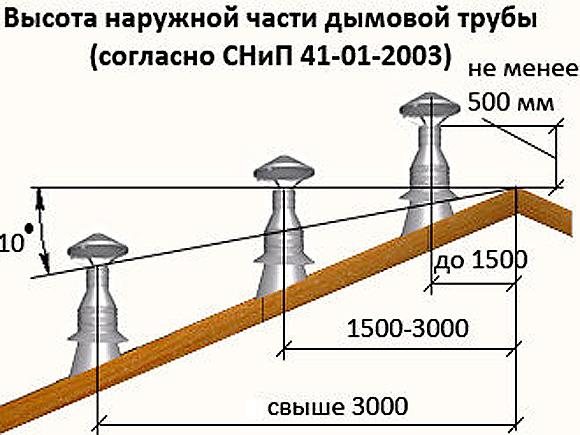

We have figured out why condensation is collecting in the chimney, and now let's see how to prevent it. First of all, correct installation of the pipe helps to prevent the appearance of excess moisture.
Installation rules
It is important to make the system sealed, insulated, waterproof, protected from the destructive action of aggressive media. To do this, it is necessary to select suitable materials for arrangement and insulation, and then be guided by the following principles:
- The chimney assembly must pass through “condensate” and not through “smoke”. For single-walled chimneys, when assembling "by condensate", the upper end is inserted into the lower one. For sandwich insulated structures, this rule applies to internal assembly. In this case, the outer part is assembled "by smoke".
- Treat each joint with a sealing compound.
- Do not deviate from the vertical by more than 30% (less serious deviations are acceptable).
- Make horizontal sections no longer than 1 m.
- Use accessories of the same cross-section (throughout the channel).
The installation must be carried out in compliance with the technologies and competently choosing the pipe material. Avoid using obsolete and hazardous materials (asbestos) or difficult to build materials (such as bricks). It is better to use ready-made chimney kits, which are presented on the website feflues.ru. The prices can be found in the price list.
What to do if the chimney is leaking
Yes, it will not be possible to completely protect against moisture on the walls of the channel, but at least the volume of its appearance can be reduced, however, at the stage of building a building and arranging the roof. But what if the house is not new (for example, you bought it from someone), has been in operation for a long time and already has this problem.
There are effective measures, and it is quite possible to take them even on your own. Below we will tell you several ways, but first, answer a simple question: what are you going to use to heat?
Focus not only on the price of the combustible material, but also on its environmental friendliness (after all, the health of yours and those of your loved ones depends on it), the economy of consumption and, attention, on its natural moisture content. Indeed, in the same fuel oil or gas there is a lower percentage of water than in wood. Also, consider how easily the fuel absorbs liquid. Any tree must be dried before use, peat or coal is strictly forbidden to wet.
Now let's move on to how to fix the problem.
Pipe cleaning
How to avoid excess moisture and deal with condensation in the chimney? Remove soot in a timely manner. Because it settles on the walls of the channel, making the surface rough, and thereby impairs the draft - the flue gases are trapped in artificially created "cavities".
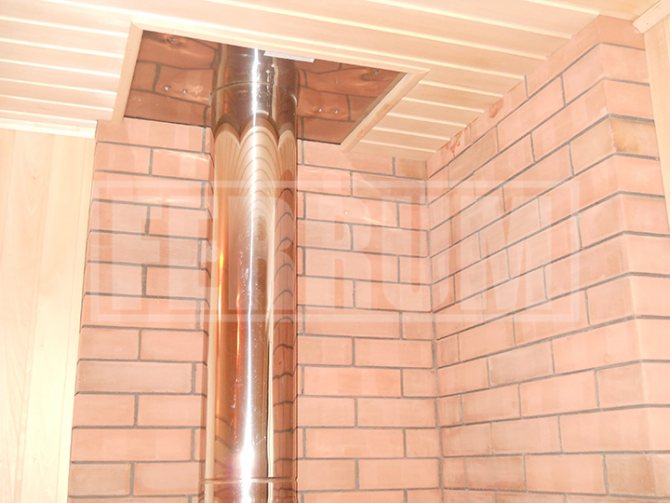

The amount of soot depends on the fuel used and the system installed. With a coal stove, there will be a lot of it, with a gas boiler - not enough. But she will still be. Therefore, it is important to clean the inside of the canal at least twice, and preferably three times a year. Choose any convenient method, mechanical or chemical, only in the first case, act carefully so as not to damage the walls, and in the second, use environmentally friendly and not too aggressive compounds.
Warming
It is important to prevent the formation of excess condensation in the chimney even at the stage of building a house or bath. For these purposes, it is necessary to use an insulated structure, namely:
- single-walled chimney in an insulated shaft;
- double-walled chimney.
How to get rid of condensation in the chimney chimney if it is constantly cold? It is necessary to insulate it with modern thermal insulation materials.If you have a brick chimney, the best option to prevent condensation is to use a stainless steel sandwich.
Protection of the channel from precipitation
Achieved by installing accessories - you need to install:
- chimney condensate drain - a container for collecting condensate, usually made of stainless steel; place such an element below the nozzle so that, if necessary, it can be easily emptied;
- deflector (umbrella with wind protection) - installed at the end of the chimney (a cone is previously attached to the sandwich), prevents precipitation from falling into the pipe;
- visor - with or without a weather vane, in the form of a fungus (four-pitched roof), with an opening lid or not; but in any case, it will protect against direct precipitation - raindrops and snowflakes.
These elements stabilize traction, eliminate the possibility of blowing out and make the appearance of the roof more modern and aesthetic.
Installation of a through-feed collector
In the chimneys of gas boilers, condensate often forms in horizontal pipe sections. In order to solve this problem, a collector is installed as a pipe segment, to which an angle of 90 ° is attached so that the chimney is tilted towards the boiler. This is done so that moisture can flow down into the condensate trap.
Number of contours
Gas boilers, which are leaders in private house heating systems, differ from conventional burners in that they can be double-circuit. How does a double-circuit gas boiler work? A double-circuit boiler means that you will be provided not only with heat, but also with hot water, which is doubly convenient and economical. Agree, because very often, the use of gas water heaters or boilers is not always convenient and economical.
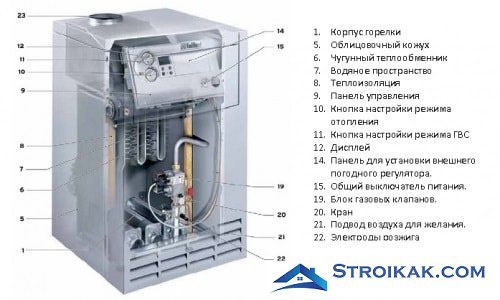

Some models of wall-mounted gas boilers have one heat exchanger with two circuits that are heated separately from each other. In this case, the alternative belongs to the open circuit, which is responsible for heating the water. When the hot water valve is opened, all the energy of the boiler is transferred to the open circuit and the system only works to heat the water. After closing the hot water valve, the boiler again functions as a heater and provides your home with heat.
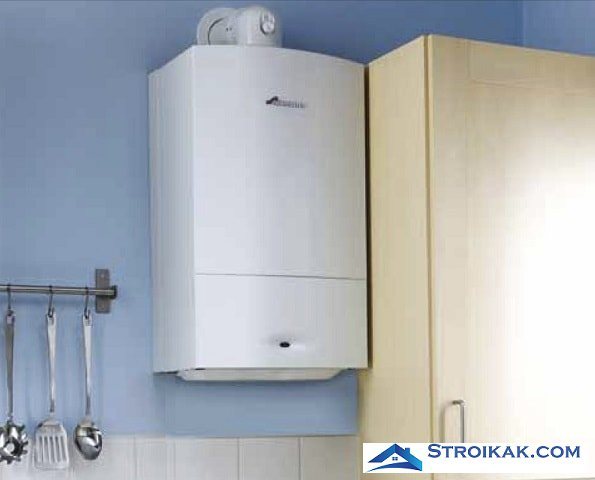

The best option for a private house would be a double-circuit gas boiler with two heat exchangers. In this version, the circuit is constantly heated, which is responsible for heating. If you need hot water, the heating circuit is shut off, and water begins to flow to the second circuit, this will happen while the hot water tap is open. This version of the gas boiler system is the most successful and profitable. The owners of the house can use hot water without sacrificing heat. Therefore, your home will always be warm, with constant hot water.
We offer you to look at a detailed story about the principle of operation of heating double-circuit gas boilers, with diagrams:
For those who have a high need for a large amount of water, and the boiler does not cope with this task, you can additionally install a boiler. In this case, it is better to consult a specialist in the installation of water equipment.
Is it possible to calculate the probability of condensation
Yes, if it appears due to overheating of the walls due to too much steam emission. In this case, it is realistic to determine what the power of the operating equipment should be.
In general, the rate of heat release (per 10 m2 of room area) is 1 kW. If the ceilings in the room are not higher than 3 meters, the formula is as follows:
MK = S * UMK / 10, where
MK is the calculated power of the boiler in kW; S is the area of the room in which the heating unit operates; UMK is a specific indicator that depends on the climatic zone of residence and is equal to:
- 0.9 - for the south;
- 1.2 - for the middle band;
- 2 - for northern latitudes.
If a double-circuit boiler is used, the resulting MK figure must be multiplied by 0.25 (additional factor).
Consequences of the formation of condensation inside the chimney
Moisture is not simply collected, but mixed with combustion products - aggressive acids (nitric, carbonic, sulfuric). By settling on the walls, these harmful compounds gradually destroy the channel (if it is made of brick, plain steel or other material with low corrosion resistance). Excessive condensation leads to the formation of soot, which clogs the hose, impairing draft, resulting in the risk of chimney fire and back draft.


Chimney reconstruction is one of the solutions to the problem
The first sign of continuous flame extinction is a faulty chimney design. There is no point in looking for other reasons why a gas floor boiler blows out in the wind, with such equipment. Gas supply is carried out under constant pressure, there are almost no significant differences. Any equipment malfunctions are unlikely, since modern boilers are reliable and simple in design. For example, the Conord boiler is known for its reliability and performance.
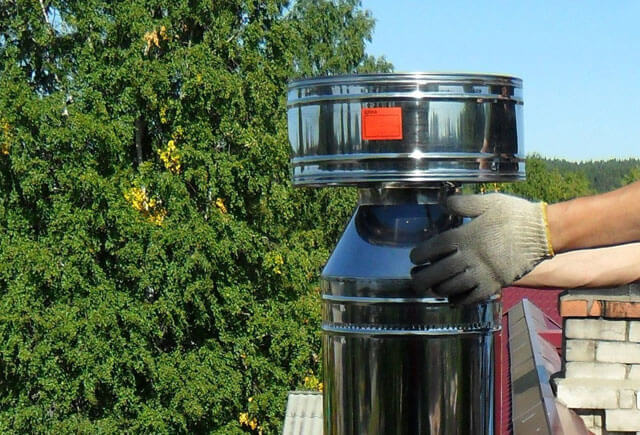

As for the chimney, here the answer to the question of why the boiler blows out in a private house is the following:
The ventilation duct of the heater is covered with an ice crust. As a result, the air circulation inside the chimney is disrupted and the gas boiler does not receive enough oxygen. In addition, water vapor enters the chimney channel, which is cooled from the ice layer and forms condensation. In turn, water droplets freeze on the walls of the chimney and the ice crust grows. The insulation of the chimney helps to solve the problem of what to do to prevent the gas boiler from blowing out. In this case, the resulting condensation will flow down the walls. Back draft due to insufficient chimney height. An increasing or changing direction of the wind creates a strong air flow that enters the chimney duct and reaches the fuel combustion chamber. As a result, the flame in the burner is extinguished.
This situation is considered more dangerous, so it is important to know what to do when the boiler blows out in strong winds. The return movement of warm air along the way captures the combustion products, therefore, they enter the boiler and pollute the combustion chamber
The ingress of harmful gases into the living space is not excluded.
Preventive measures
We will tell you how to get rid of the cause of condensation in the chimney. It's simple: you need to prevent the appearance and development of moisture formation factors. This requires:
- competently design a heating system and equip it strictly according to the drawings;
- correctly mount the flue gas vent made of material resistant to aggressive environments and high temperatures;
- provide high-quality thermal insulation;
- to maximize thrust - by installing deflectors, visors, rotary turbines;
- use suitable and dry fuel;
- carry out regular cleaning of the inner surfaces of the sleeve.
Now that you know why condensation forms in the chimney of a flue boiler and how to eliminate it, you can extend the life of the heating system, as well as increase the convenience and efficiency of using it.
Environmental friendliness of the condensing boiler
The creation of an almost closed cycle significantly reduces CO2 emissions by 40% compared to a conventional boiler and by 20% compared to a low-temperature boiler. Also, nitrogen oxide emissions have been reduced by 90% and 60%, respectively.


Into the reader's notebook
It should be understood that the condensate is carbonic acid and the requirements of the supervisory authorities (Mosvodokanal) require chemical neutralization of the acidic environment if the acid-to-water ratio is greater than 1/25.
Let's give an example. Condensing boiler with a capacity of 60 kW, emits 0.0070m³ of condensate per hour. During the same time, the heating system of the house of 480 meters (where this boiler is located) produces 0.680 cubic meters of water per hour. The ratio of condensate to water is 1/95, which is in accordance with the norms.
© Obotoplenii.ru
